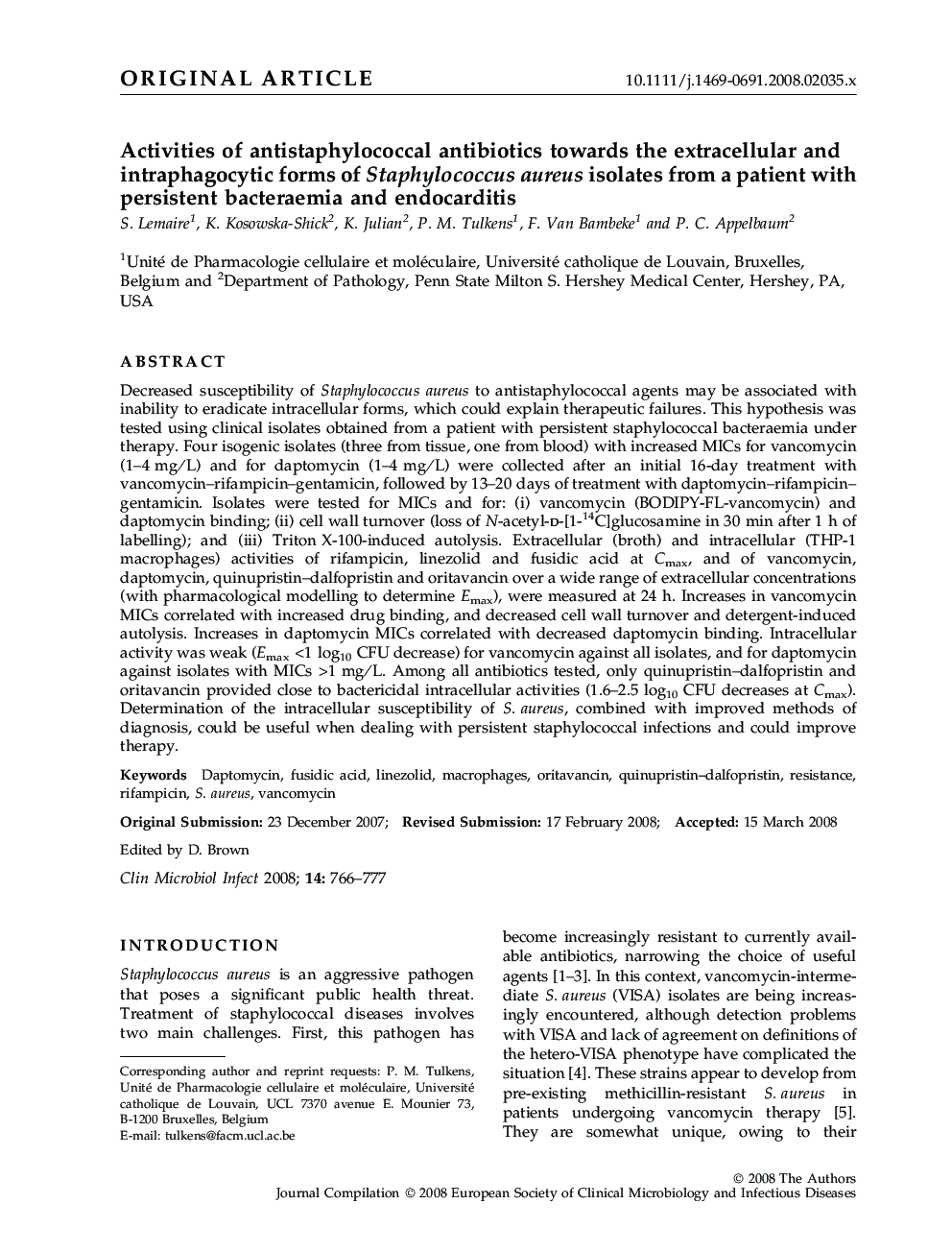| Article ID | Journal | Published Year | Pages | File Type |
|---|---|---|---|---|
| 3398543 | Clinical Microbiology and Infection | 2008 | 12 Pages |
ABSTRACTDecreased susceptibility of Staphylococcus aureus to antistaphylococcal agents may be associated with inability to eradicate intracellular forms, which could explain therapeutic failures. This hypothesis was tested using clinical isolates obtained from a patient with persistent staphylococcal bacteraemia under therapy. Four isogenic isolates (three from tissue, one from blood) with increased MICs for vancomycin (1–4 mg/L) and for daptomycin (1–4 mg/L) were collected after an initial 16-day treatment with vancomycin–rifampicin–gentamicin, followed by 13–20 days of treatment with daptomycin–rifampicin–gentamicin. Isolates were tested for MICs and for: (i) vancomycin (BODIPY-FL-vancomycin) and daptomycin binding; (ii) cell wall turnover (loss of N-acetyl-d-[1-14C]glucosamine in 30 min after 1 h of labelling); and (iii) Triton X-100-induced autolysis. Extracellular (broth) and intracellular (THP-1 macrophages) activities of rifampicin, linezolid and fusidic acid at Cmax, and of vancomycin, daptomycin, quinupristin–dalfopristin and oritavancin over a wide range of extracellular concentrations (with pharmacological modelling to determine Emax), were measured at 24 h. Increases in vancomycin MICs correlated with increased drug binding, and decreased cell wall turnover and detergent-induced autolysis. Increases in daptomycin MICs correlated with decreased daptomycin binding. Intracellular activity was weak (Emax <1 log10 CFU decrease) for vancomycin against all isolates, and for daptomycin against isolates with MICs >1 mg/L. Among all antibiotics tested, only quinupristin–dalfopristin and oritavancin provided close to bactericidal intracellular activities (1.6–2.5 log10 CFU decreases at Cmax). Determination of the intracellular susceptibility of S. aureus, combined with improved methods of diagnosis, could be useful when dealing with persistent staphylococcal infections and could improve therapy.
